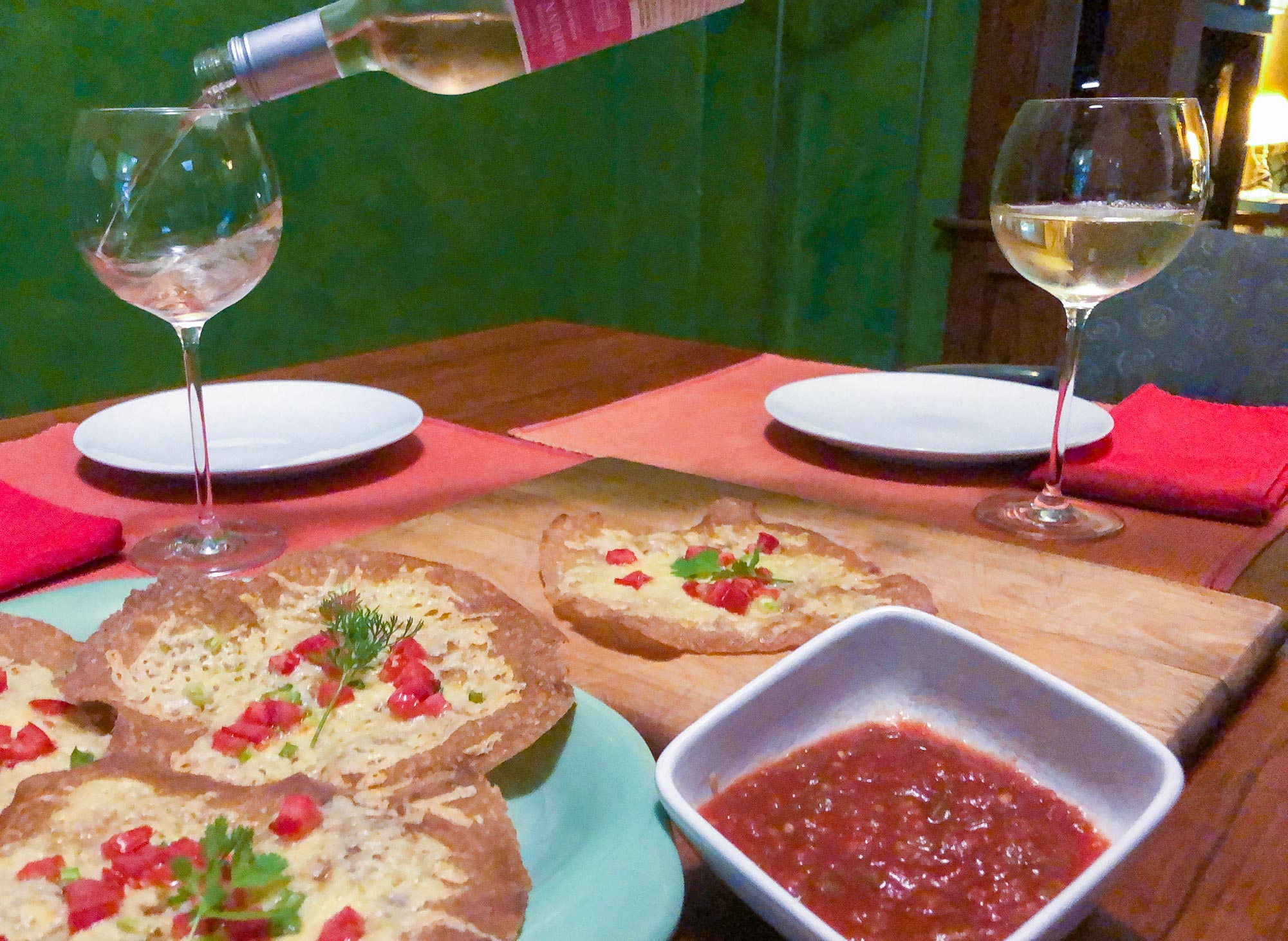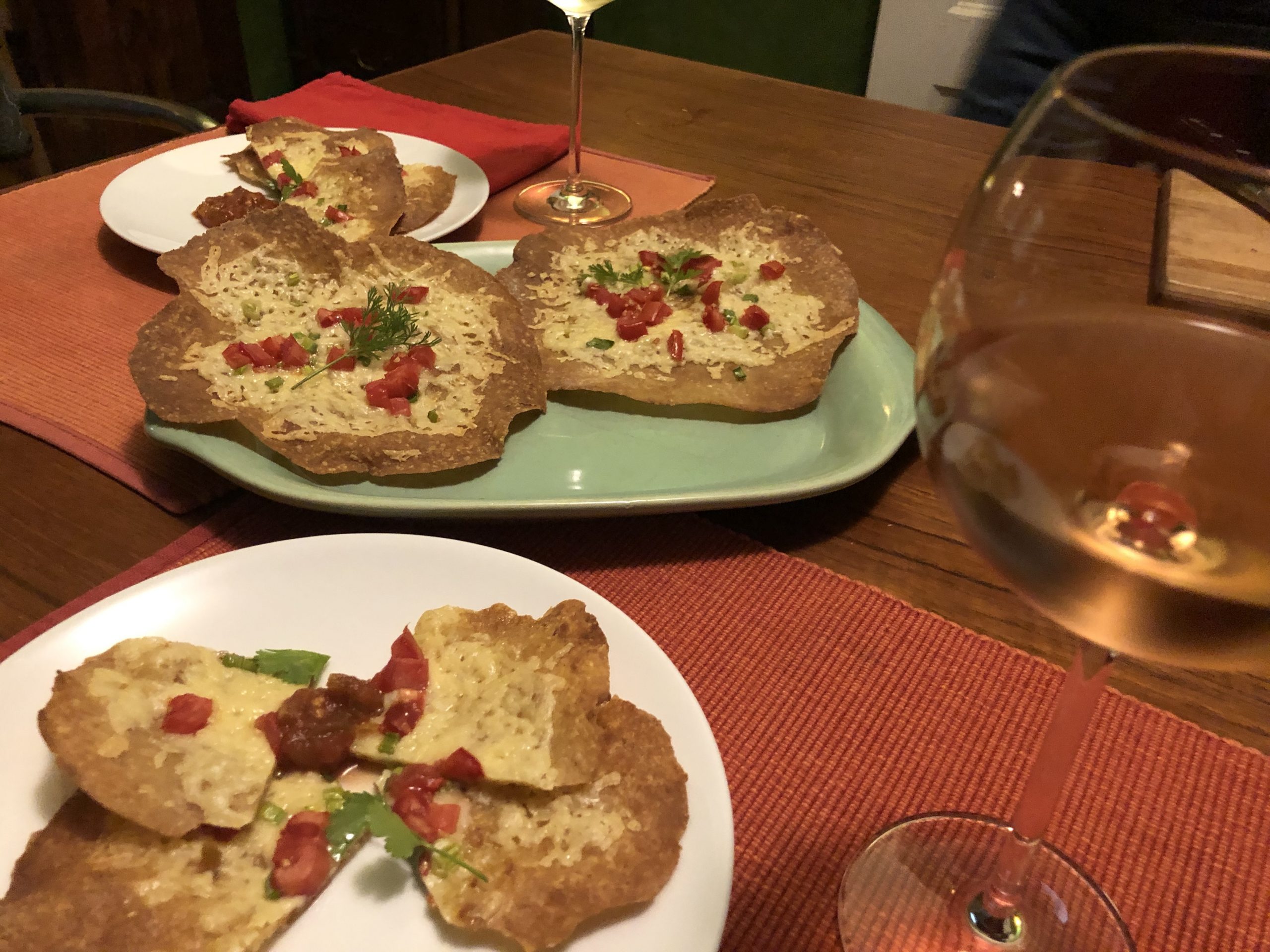Not From a Sack of Tortillas
Steuart made a coarse cornmeal, flour and water mixture that turned into something like a corn tortilla you could buy in the grocery store. His tortillas that he used as a base for vegetables and as a nice lice were: mostly corn, round, thin and yellow. Unlike those they were full of flavor and a great tooth for a eating with the topping, especially when fried. These were unlike the organic tortillas we buy at Whole Foods because they were not falling apart. They did not turn tough like those from an ordinary grocery store. How old are tortillas by the time I can buy them? Nor did they fry up and become so sharp that a bite cuts the inside of my mouth. Nor so crumbly they become shards under the vegetable toppings.
Toothy Tostada-style Flatbreads
Taking equal amounts of coarse corn meal and flour onto the scale and then adding 65% of their weight in water, Steuart mixed this together into a wet dough. He let them sit for several hours, and divided the dough in half. Less than a cup total of flour and cornmeal made 4 tostadas that night, and the reserved half of the dough made another four later in the week. The dough kept well in the fridge and was easier to roll thinner after a few days.
Roll thin. Heat about a teaspoon of olive oil, on the center of our sauté pan, and when it spread to the size of the tostada, place the round onto the oil and fry until crisp. Flip and then place in warm oven to stay warm. Having been rolled very thin, frying one at a time is the best method for success. And these tostadas were crispy, broke easily under a fork but didn’t splinter. They had substance like a flatbread.
To make these a meal the tortillas are topped with a grated Mexican asedero, Monterey Jack or other mild semi-hard cheese that melts well. As they are taken from the over browned and melted cheesey, add tomatoes, onions, fresh cilantro or anything else you’d put on nachos or a tostada. A minerally white from Spain or a crisp rosé are excellent with the tostadas.



